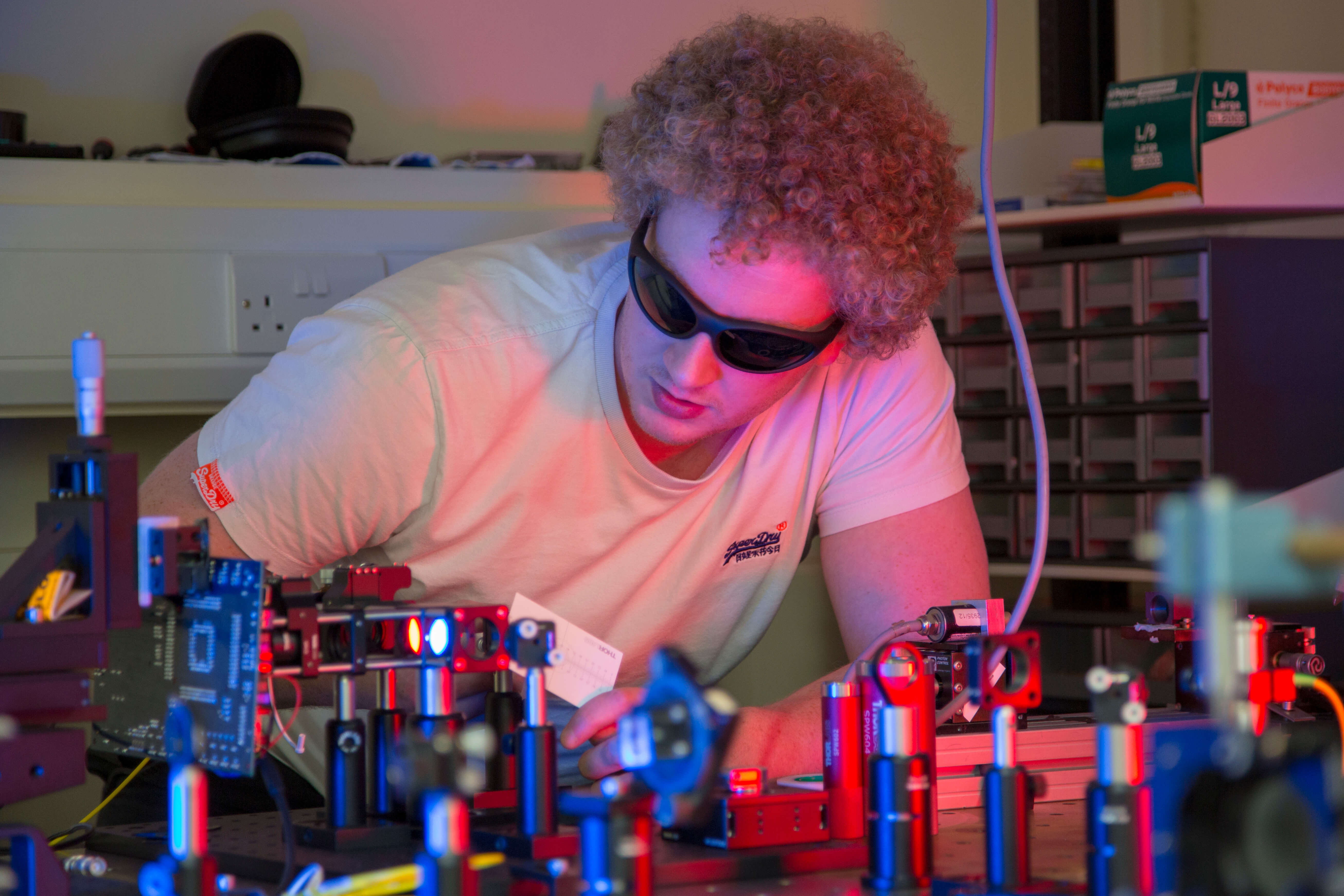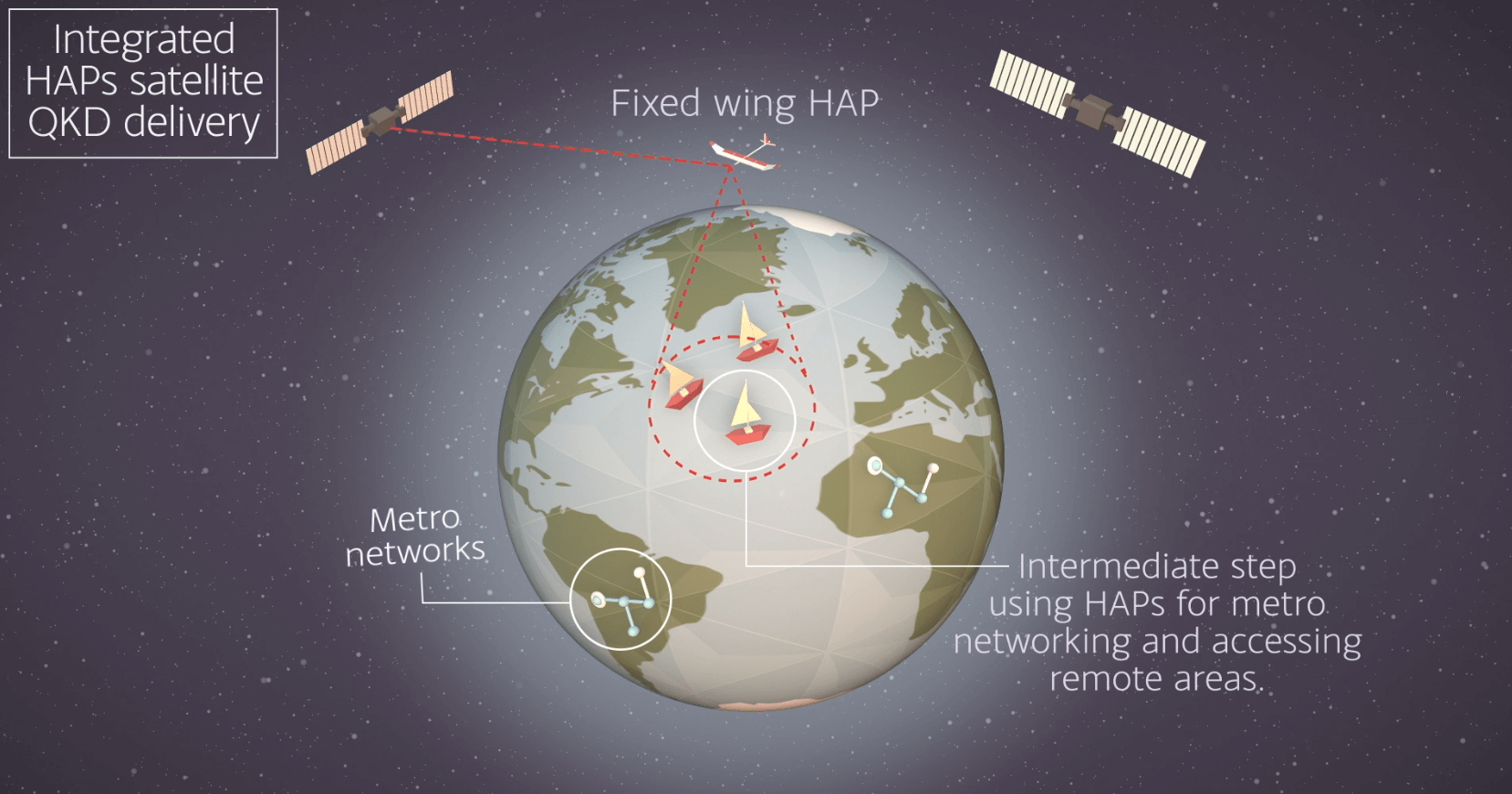Terrestrial links can be considered to be point‑to‑point links utilising either line‑of‑sight free‑space or optical fibre (or a combination of both). Here, we focus on the point‑to‑point free‑space links, which can be used for a range of applications; hand‑held, building‑building, drone‑to‑building, submarine‑to‑aeroplane, amongst others.
Fixed platforms
While optical fibre connection has many benefits for service, creating that end‑to‑end optical fibre connection can be costly and have a long lead time. Free‑space links enables a network that can be; set up in a timelier manner, dynamic in nature, and reconfigured to include new and upgraded systems.
In the Single‑Photon Group, we are working with industrial partners to create a 1st generation commercial service for terrestrial free‑space quantum communications. We lead the design and development of a practical quantum transmitter and receiver, which will then be transformed into an industrial prototype by industrial partners.
Aerial platforms
Non‑static terrestrial free‑space links are experiencing an exponential increase in interest due to the range of applications where mobile or nomadic platforms need secure communications. One primary area of interest is securing autonomous vehicle communications (cars, drones, and ships) to prevent upload of malicious software, data theft, or even taking control of vehicles.
The Single‑Photon Group investigates the implementation of quantum communications with aerial vehicles and has recently collaborated with other academic teams on the feasibility of utilising High Altitude Platforms (HAPs).
HAPs are platforms that are able to cruise in the stratosphere at an altitude of around 20 km. There are two major types of HAPs; heavier than air, and lighter than air. The platforms can be rapidly deployed and relocated, and are seen as a potential enabler technology for quantum communications networking. They can provide a continuity of service, are relatively easily maintained, and can move their coverage area.
Current work highlights that HAPs could be used to provide HAPs-to-ground service. As HAPs are at a lower altitude than satellites, they can exploit the use divergent beams for service, reducing the requirements of the pointing-and-tracking systems. We continue to develop this area of research in collaboration with the Centre for High Altitude Platform Applications and the National Quantum Communications Hub.
Meet the researchers
Selected publications
- Y. Chu, R. Donaldson, R. Kumar, and D. Grace, "Feasibility of quantum key distribution from high altitude platforms", Quantum Sci. Technol. 6, 035009 (2021).
- Alfonso Tello Castillo, Catarina Novo, and Ross Donaldson, "Prospects of time‑bin quantum key distribution in turbulent free‑space channels", SPIE Security + Defence, Online Only (2020).





